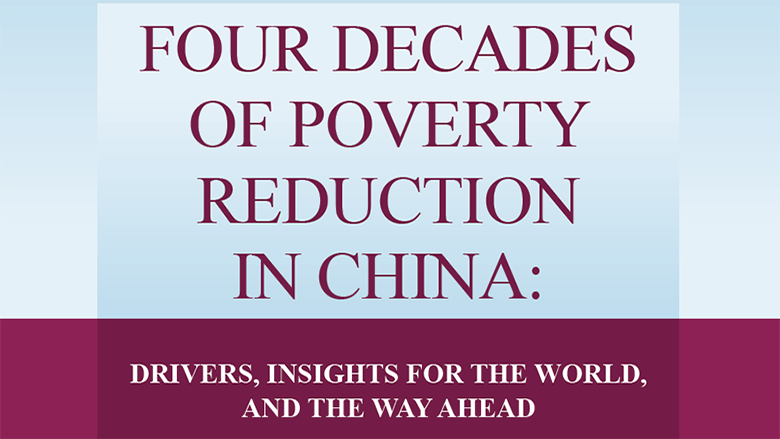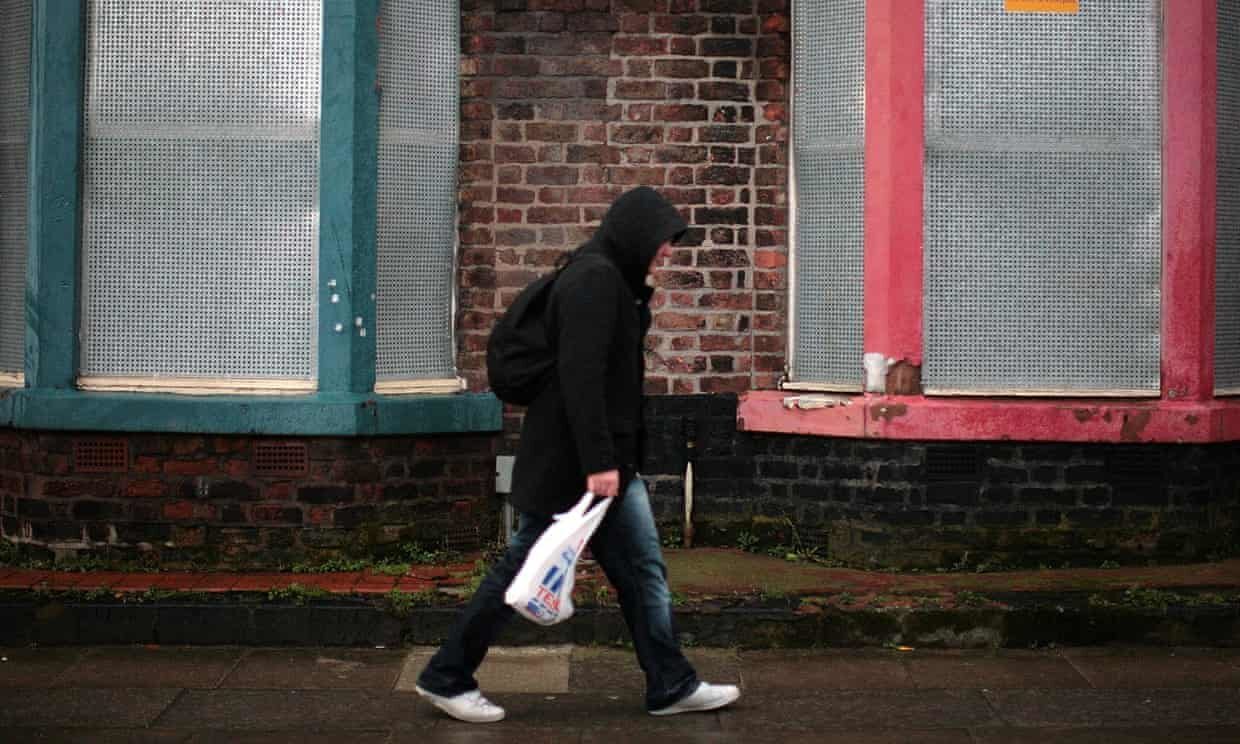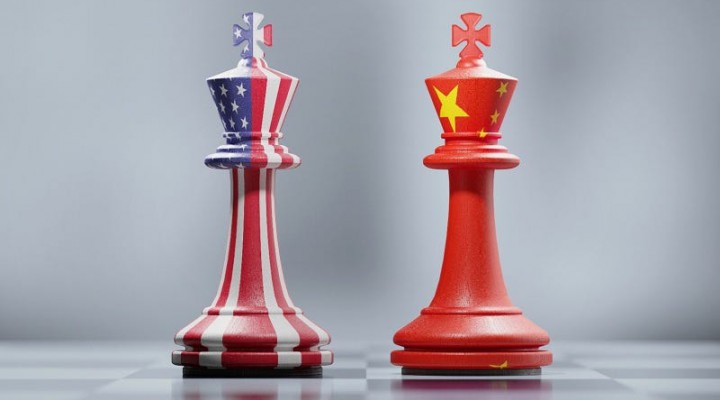A while ago I tried to get some data on relative poverty rates for various countries, but from my limited searches at the time it wasn't easy to draw any obvious and intuitive comparisons between various countries based on the basic figures provided by governments or the World Bank. Here's a description of the World Bank's metrics, which attempt to determine an absolute measure applicable to all countries. But there are problems with that, because the real poverty rate will be higher in countries with a higher cost of living, for example. And European countries use their own relative poverty rates, making it hard to compare to non-EU and OECD countries. First couple paragraphs of that article:Report from the World Bank:

Lifting 800 Million People Out of Poverty – New Report Looks at Lessons from China’s Experience
Over the past 40 years, China has lifted nearly 800 million people out of poverty, accounting for more than 75 percent of global poverty reduction in the same period, according to a new report released on Thursday.www.worldbank.org
Meanwhile in the West the number of people falling below the poverty line is rising, and life expectancy - and this is prior to the lockdowns - for the poorest has stalled or is falling:

More than 4m in UK are trapped in deep poverty, study finds
More than 4 million people in the UK are trapped in deep poverty, meaning their income is at least 50% below the official breadline, locking them into a weekly struggle to afford the most basic living essentials, an independent study has shown....www.sott.net
Looking around I found this interesting paper published earlier this year in the Chinese Journal of Sociology comparing relative poverty in Germany, the UK, the US and China. First some interesting excerpts on the decline in absolute poverty in China, then their concluding remarks:Is poverty absolute or relative? When we think of (one-dimensional) income poverty, should we define the threshold that separates the poor from the non-poor as the cost of purchasing a fixed basket of goods and services that allows people to meet their basic needs? Or should we instead think of it as relative deprivation: as earning or consuming less than some given proportion of the country’s average living standard?
This is an old debate, and international institutions have made different choices. Whereas the European Union (through Eurostat) and the OECD typically rely on relative poverty lines – set at 50% or 60% of national median incomes – the World Bank has traditionally used an absolute poverty line, currently set at $1.90 per person per day, in 2011 PPP dollars. The World Bank’s motivation was to measure poverty across countries in a welfare-consistent way: We wanted the International Poverty Line (IPL) to correspond, as far as possible, to the same level of welfare, regardless of the country the individual lived in. PPP exchange rates were used to try to account for differences in the cost of living across countries, and the intention was that a line thus adjusted would capture the same levels of well-being, in a way that using half the median income in, say, Madagascar and the Czech Republic, never could. The specific value of the international poverty line was, by design, anchored on the poverty thresholds used by some of the world’s poorest countries (see Ravallion, Datt and van de Walle).
Absolute poverty in China
Scholars, government agencies and international organisations have used different poverty lines in their research. So, there is a range of estimates of the level of poverty in China (see e.g., Li et al., 2013: 74, Table 2.16). But all studies point to a large decline over the past 40 years, irrespective of which poverty line is used (Ravallion and Chen, 2007; Zhang et al., 2014).
Appleton et al. (2010) argue that the main driver of poverty reduction in China is economic growth, not redistribution or anti-poverty programmes. And since absolute poverty in China is “predominantly a rural phenomenon” (Gustafsson and Zhong, 2000: 984), it was “[g]rowth in the primary sector (primarily agriculture) [that] did more to reduce poverty” (Ravallion and Chen, 2007: 2). The critical policy change that spurred rural growth in the 1980s was the decollectivisation of agriculture and the return to family farming (Oi, 1989).
It is well-known that income inequality in China has risen very sharply since the mid-1980s (Chan et al., 2019; Xie and Zhou, 2014). It might be thought that a higher level of inequality is the necessary price to pay for the economic growth that is needed to reduce poverty. But there is no evidence for this. As Ravallion and Chen (2007: 3) observe, “[t]he periods of more rapid growth did not bring more rapid increase in inequality. Nor did provinces with more rapid rural income growth experience a steeper increase in inequality. Thus, provinces that saw a more rapid rise in inequality saw less progress against poverty, not more”.
The progress in poverty reduction was uneven, with “[h]alf of the decline in the number of poor came in the first half of the 1980s” (Ravallion and Chen, 2007: 2). After the mid-1980s, the poverty headcount continued to fall, but there were reverses and the rate of decline slowed down considerably. Spatially speaking, there is more poverty in Western China than in the central provinces which, in turn, are poorer than the provinces on the Eastern coast (Gustafsson and Sai, 2009). Li et al. (2013: 76) observe that “by all measures, China's poor is heavily concentrated in the West”.
Of even greater importance than the regional difference is the urban–rural divide. Ravallion and Chen (2007: 8) show that “[f]or all years and all measures, rural poverty incidence exceeds urban poverty and by a wide margin”. Similarly, Li et al. (2013: 75) report that “using absolute poverty measures, more than 95 percent of the poor were rural”.
The concentration of poverty in rural areas is a direct consequence of the pre-reform strategy of fuelling industrialisation by squeezing the countryside (Oi, 1989). Before the market reform, urbanites enjoyed secure employment and a wide range of benefits and services that were provided through their work units (danwei). Although meagre by Western standards, income and consumption were far higher in Chinese cities than in the countryside.
This created a strong incentive for peasants to move to the cities. To restrict rural–urban migration, a system of household registration (hukou) was introduced in the 1950s which has for decades “effectively bound peasants to the soil” (Whyte, 2005: 10). Restriction on migration has gradually been relaxed and there are now over 200 million internal migrants in China (Liang et al., 2014). But hukou still exists as a legal category. Migrant workers living in cities do not have access to health care, education, or other public services that are available to those with urban hukou (Chan and Zhang, 1999). Furthermore, as migrants tend to work in unskilled, low-wage jobs, they are typically found at the bottom of the urban economic hierarchy.
Despite that, the impact of migration on urban poverty seems quite small. Park and Wang (2010) show that in terms of housing conditions and other non-monetary welfare indicators migrants are indeed worse off than non-migrants. Migrants also earn lower hourly wages. But as they tend to work longer hours and have a lower dependency ratio in their household, the gap in disposable income between migrant and non-migrant households is smaller than might be expected. Overall, Park and Wang (2010: 55) conclude that the difference in poverty rate among migrants and non-migrants is very small and that “including migrants has a negligible impact on the overall urban poverty estimates”.
In the countryside, remittances from migrants certainly help raise household income. But Du et al. (2005: 706) point out that “[t]he poorest rural households with few laborers and poor human capital are unable to allow members to migrate”. Thus, “the overall impact of migration on [rural] poverty headcount has been modest”.
Although poverty in China is concentrated in the countryside, urban Chinese have been facing greater poverty risks since the mid-1990s. In particular, state-owned enterprise (SOE) reforms had led to 28 million workers (about a quarter of the SOE workforce) being laid off (Appleton et al., 2014). This contributed to the doubling of the urban unemployment rate from 6% to 12% between 1993 and 2000 (Meng and Gregory, 2007).
Other reforms also put economic pressure on city dwellers. In particular, the Chinese state used to subsidise urbanites’ food consumption through a coupon system. The value of the coupons distributed to each household was a function of its size and the age of its members. The coupon system was abolished in 1993 and food price control was lifted. Although urban wages had gone up, giving urbanites greater spending power to cope with food price inflation, larger households with few working members lost out in this reform (Meng and Gregory, 2007). Also, urbanites now need to pay for many public services, for example, education and health care, that were previously free or heavily subsidised.
In response to the growing economic hardship in the cities, the Chinese state piloted a minimum living standard guarantee programme (dibao) in Shanghai in 1993, which was then rolled out across urban China in 1999. In 1999, 2.7 million urbanites were enrolled on dibao, rising to 23.4 million in 2008 (Gustafsson and Deng, 2011). A dibao programme for rural China was launched later and became nationwide in 2007. By 2012, it covered 53 million people, about 8% of the rural population (Li and Sicular, 2014).
As with many social programmes in China, the implementation of dibao is very decentralised. Municipal and provincial authorities have a lot of leeway in setting the dibao line, determining the eligibility criteria, and so on (Ravallion, 2014). The World Bank (2009: 123–124) reports that in 2004 the income threshold for rural dibao ranges between 120 yuan and 1560 yuan per person per year. In any case, due to the restricted coverage of the dibao programmes, their impact on poverty reduction is limited (Chen et al., 2006; Li and Sicular, 2014). Overall, a good deal is known about absolute poverty in China. But, as I will show below, relative poverty is a different story altogether.
Summary and discussion
China has made some truly significant progress in tackling absolute poverty. But relative poverty is a different story altogether. Compared to Germany, the UK, and the US, not only is relative poverty more common in China, it is also deeper and more severe. Furthermore, while absolute poverty in China is “predominantly a rural phenomenon”, relative poverty afflicts Chinese cities as much as it does the countryside.
By international standards, a very large share of China's relative poverty is transient in nature. (Transient poverty is also important in the UK. A point that I will return to later.) Direct measures of poverty entry and exit rates also suggest greater instability of people's economic fortune in China. Compared to their Western counterparts, the average Chinese faces significantly higher risks of falling into relative poverty. But the relatively poor in China are also more likely to escape poverty than the poor in Germany or the US.
The combination of high poverty entry rate and high poverty exit rate means that there are more occasional poverty and more recurrent poverty in China than in the West. Indeed, while a minority of people in Germany, the UK and the US were touched by relative poverty over three waves (four years), being poor was actually the experience of a small majority of Chinese.
Relative poverty in China is distinctive in many ways. But we should not regard China as sui generis, as the covariates predicting poverty status are very similar across the four countries. For example, higher educational qualifications, employment, and having more earners in the household all protect against poverty in the four countries. But collectively these covariates are much less predictive of poverty status in China than in Germany, the UK and the US.
The findings of this paper also speak to our understanding of poverty dynamics in general. Duncan et al. (1993) posit that countries with more poverty tend to have higher poverty entry rates, and that is because the non-poor in those countries tend to be closer to the poverty line. We do observe higher poverty entry rates in countries with more poverty. But the non-poor of those countries (e.g., China and the US) are actually further away from the poverty line than their counterparts in countries with less poverty (e.g., Germany and the UK).
Furthermore, Duncan et al. (1993) argue that poverty exit rates would be lower in countries with more poverty, as the typical poor person in those countries would be further below the poverty line. Once again, this is only partly true. The median poor person in China or the US are indeed further away from the poverty lines than the median poor person in Germany or the UK. But poverty exit rates are much higher in China or the UK than in Germany or the US.
Some revisions to Duncan et al. (1993) are therefore necessary. Mechanically speaking, it is a large income change that pushes people into poverty or plucks them out of it. What counts as a large income change depends partly on how far someone is from the poverty threshold. This is why the claims of Duncan et al. (1993) are eminently reasonable. But our findings show that this is not the whole story. Other social forces operating in the labour market, in households and in the broader policy environment also make large income changes more likely to occur in some countries than in others.
For example, using the same data sets, Chan et al. (2019) show that not only is permanent income more unequally distributed in China than in the West, but there is greater instability in transitory income in China too. They decompose the total variance of log-income in the panel data into its between and within components, and report that “in Germany, the UK, and the US the lion's share of income inequality is found between individuals rather than within individuals. But the opposite is true for China, suggesting that the average Chinese face a much higher degree of income instability and uncertainty” (Chan et al., 2019: 443). Moreover, while there is regression to the mean in income in all four countries, “the magnitude of income change is always larger in China than in the three Western countries” (Chan et al., 2019: 439). They then argue that broader changes in the labour market and employment practices in China have created a large pool of casually employed workers which, in turn, explains the heightened income instability in China (Gallagher, 2005; Kuruvilla et al., 2011).
Finally, the implications of the findings of this paper go beyond China. In comparative research on welfare capitalism, the UK and the US are often grouped together as exemplars of the liberal regime. Similarly, Atkinson (2015: 20) notes that, so far as inequality is concerned, “the situation in the UK is a pale imitation of what is happening in the US, and that the UK chart can be obtained by simply replacing ‘S’ by ‘K’ in the heading. There is some truth in this. But the poverty dynamics of the two countries is actually quite different. In particular, rates of poverty exit are much higher in the UK than in the US (see also Office for National Statistics, 2015; Vaalavuo, 2015; Valletta, 2006). This means that there is much less chronic poverty in the UK. This is a particularly intriguing outcome as many of the anti-poverty policies brought in by the New Labour government (1997–2010), for example, tax credits, were “strongly influenced by evidence from US welfare-to-work experiments and, again, had many elements common with them” (Waldfogel, 2010: 5). Further work on how the social structure and/or anti-poverty programmes of the UK and US had led to such different poverty dynamics would be very illuminating.
Last edited:




